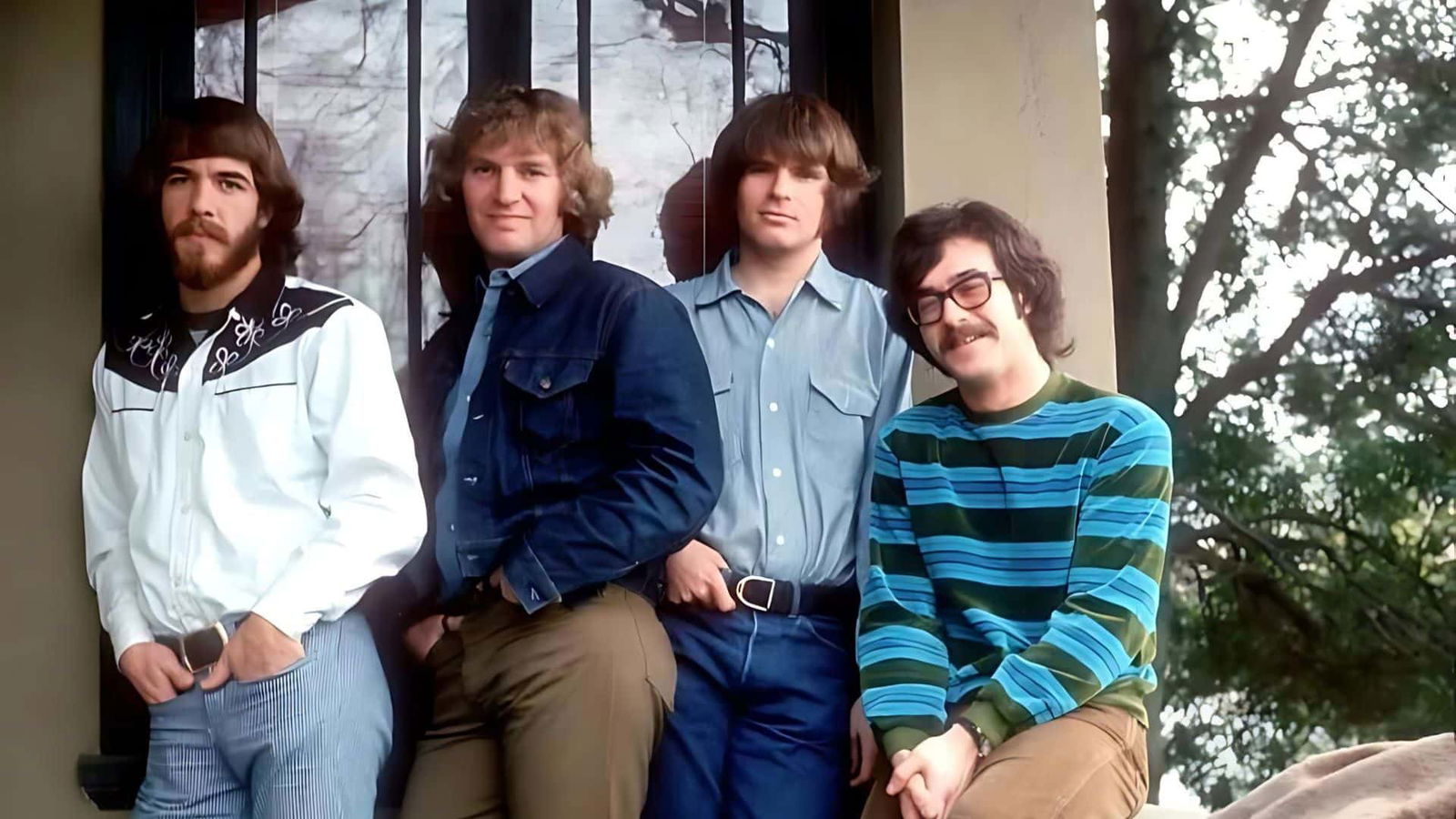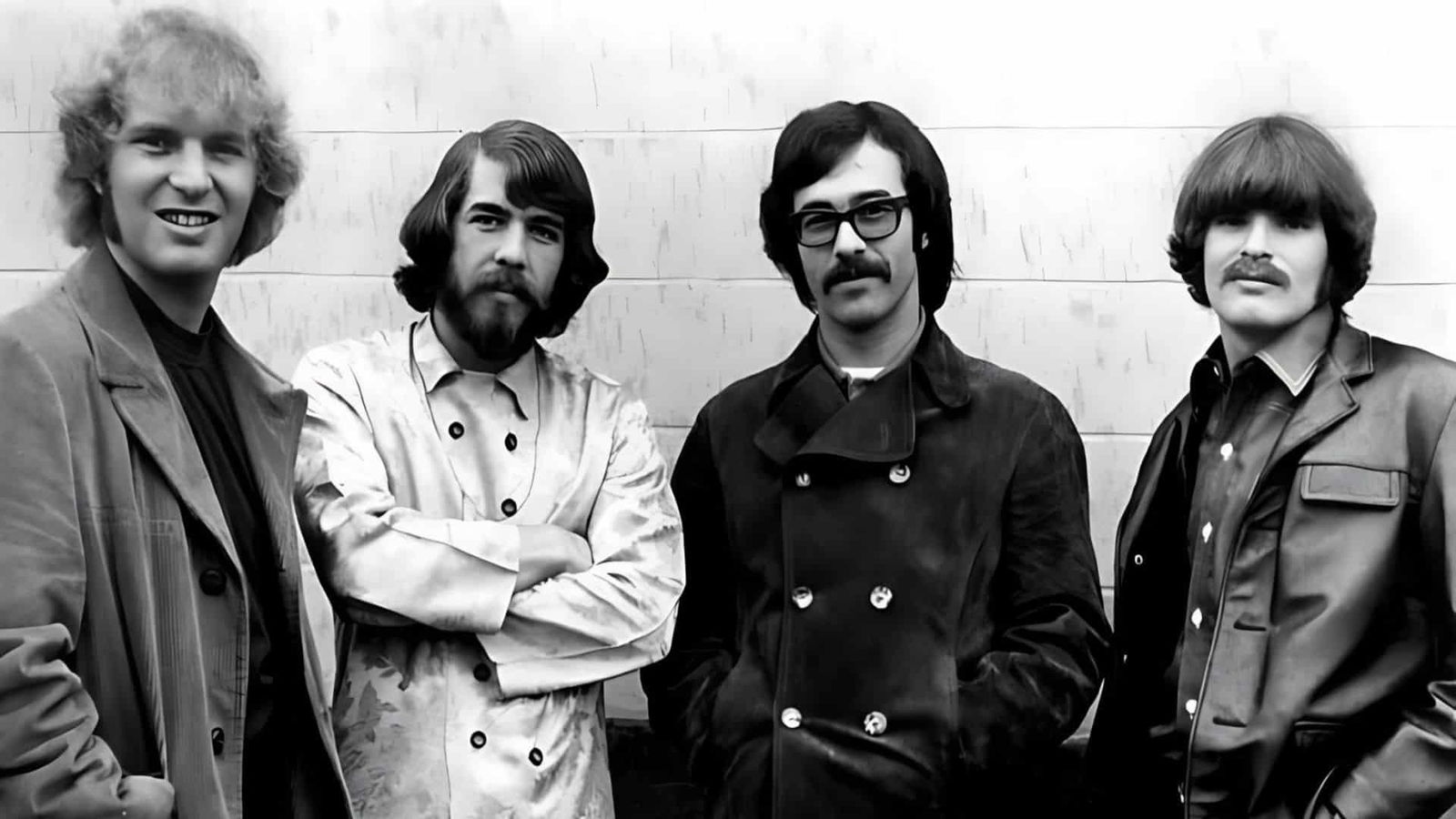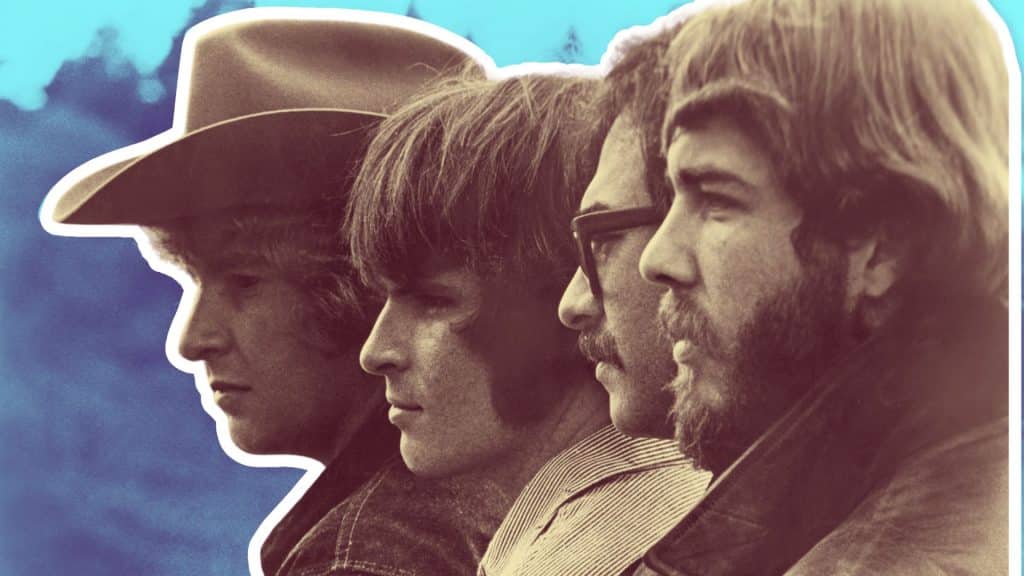Creedence Clearwater Revival (CCR) is one of the most iconic American rock bands, known for their unique blend of rock, country, and blues.
Many fans wonder about the band’s origins and how they created their signature sound that still resonates with listeners today. In this article, we’ll explore CCR’s roots and their lasting impact on music.
We’ll delve into the band’s formation in El Cerrito, California, and discuss how their experiences, including John Fogerty and Doug Clifford’s military service, shaped their music and political stance.
From their early days as The Blue Velvets to their rise to fame with hits like “Proud Mary” and “Fortunate Son,” we’ll examine CCR’s journey and how they became one of the most influential bands of their generation.
CCR’s Formation and Early Years
The story of Creedence Clearwater Revival begins in El Cerrito, California, where the founding members first met as students at Portola Junior High School.
In 1959, John Fogerty, Doug Clifford, and Stu Cook formed a band called The Blue Velvets, with John’s older brother Tom Fogerty joining later.
The young musicians started by playing instrumentals and backing up Tom at local shows and recordings.
In 1964, the band signed with Fantasy Records, an independent jazz label in San Francisco.
However, before releasing their first single, the label’s co-owner, Max Weiss, renamed the group “The Golliwogs,” a name the band members disliked.
Under this name, they released several singles between 1964 and 1966, with John and Tom writing most of the songs under the pseudonyms “Toby Green” and “Rann Wild.”
During this period, John and Doug were drafted into the U.S. military, with John joining the Army Reserve and Doug serving in the Coast Guard Reserve.
Their experiences during this time would later influence some of CCR’s most iconic songs.
In 1967, with the band members returning from military service, they changed their name to Creedence Clearwater Revival.
The name was inspired by Tom’s friend Credence Newball, a TV commercial for Olympia Brewing Company, and the band’s renewed commitment to their music.
This marked the beginning of their journey to becoming one of the most successful and influential American rock bands ever.
Musical Success and Style of CCR

Creedence Clearwater Revival’s musical style was a distinctive blend of rock, country, and blues, which helped them stand out from their contemporaries.
Their sound was heavily influenced by Little Richard, Hank Williams, Elvis Presley, Chuck Berry, and the artists from Motown and Stax Records.
Despite the band hailing from California, CCR’s music often featured lyrics about the American South, with references to bayous, catfish, and the Mississippi River.
The band’s breakthrough came with their 1968 “Susie Q” cover, which received significant airplay and reached number 11 on the Billboard Hot 100.
This success was followed by a string of hit albums and singles between 1969 and 1970, solidifying CCR’s status as one of the era’s most popular bands.
Some of their most notable albums during this period include:
- “Bayou Country” (1969) – featuring the hit single “Proud Mary”
- “Green River” (1969) – containing the title track and “Bad Moon Rising”
- “Willy and the Poor Boys” (1969) – showcasing “Down on the Corner” and “Fortunate Son”
- “Cosmo’s Factory” (1970) – featuring hits like “Up Around the Bend,” “Lookin’ Out My Back Door,” and an 11-minute cover of “I Heard It Through the Grapevine.”
Political Influence and Social Commentary

Creedence Clearwater Revival’s music was popular and politically charged, reflecting the social and cultural turmoil of the late 1960s and early 1970s.
The band’s lyrics often addressed the Vietnam War, class inequality, and other pressing issues.
John Fogerty’s experiences in the Army Reserve significantly influenced his songwriting. He witnessed firsthand the injustice of the military draft system.
Songs like “Fortunate Son” and “Who’ll Stop the Rain” became anthems of the anti-war movement, resonating with the public’s growing discontent with the conflict in Vietnam.
“Fortunate Son” was a scathing critique of the draft system and the privileged elite who could avoid military service.
The song highlighted the inequality between the working-class Americans who were sent to fight and die in Vietnam and the “senator’s son” who was exempt from the draft.
Its powerful lyrics and driving rhythm struck a nerve with listeners and cemented CCR’s reputation as a socially conscious band.
Other songs, such as “Run Through the Jungle” and “Bad Moon Rising,” also touched on the themes of the Vietnam War and the sense of unease and uncertainty that permeated American society during this period.
These songs showcased CCR’s ability to craft music that entertained, provoked thought, and encouraged listeners to question the status quo.
CCR’s music became a voice for a generation grappling with the complexities of war, politics, and social change.
Turmoil and Breakup of CCR
Despite their incredible success, Creedence Clearwater Revival was not immune to internal conflicts and tensions.
By the early 1970s, relationships among the band members had strained, particularly between John Fogerty and the rest of the group.
John’s older brother, Tom Fogerty, was the first to leave the band, officially departing in 1971.
Tom had grown increasingly frustrated with his diminished role in the group as John took on more control over the band’s creative direction and decision-making.
Tom’s departure was a significant blow to the band, personally and professionally. Following Tom’s exit, John, Stu Cook, and Doug Clifford continued as a trio.
However, tensions continued to mount, with John’s growing dominance and the other members’ desire for more creative input leading to frequent disagreements.
John’s insistence on controlling the band’s music and business affairs and his reluctance to share songwriting and vocal duties further exacerbated the situation.
Moreover, the band’s relationship with Fantasy Records and its owner, Saul Zaentz, had become increasingly contentious.
Disputes over royalties, publishing rights, and artistic control led to legal battles that would persist for years after the band’s breakup.
These internal conflicts and the pressure of living up to their previous success took a toll on the band.
In October 1972, less than six months after completing their final tour, Creedence Clearwater Revival officially announced their disbandment.
The breakup marked the end of an era for one of America’s most beloved and influential rock bands, leaving fans to wonder what could have been had the group managed to overcome their differences.
CCR’s Legacy and Influence

The band’s legacy has been recognized through numerous accolades and honors.
In 1993, Creedence Clearwater Revival was inducted into the Rock and Roll Hall of Fame, cementing its status as one of rock history’s most significant and influential bands.
Rolling Stone magazine has also acknowledged their impact, ranking them 82nd on their “100 Greatest Artists of All Time” list and including several of their albums and songs on various “best of” lists.
CCR’s music continues to resonate with modern audiences, as evidenced by the popularity of the 2022 Netflix documentary “Travelin’ Band: Creedence Clearwater Revival at the Royal Albert Hall.”
The film features previously unseen footage of the band’s 1970 performance at the iconic London venue. It has introduced a new generation of fans to its timeless music and powerful stage presence.
The band’s influence can also be heard in the work of numerous contemporary artists, such as Bruce Springsteen, Tom Petty, and Kings of Leon, who have cited CCR as a major inspiration.
Their songs have been covered by a diverse array of musicians, from punk rock icons like the Ramones to country superstars like Garth Brooks, further testament to their music’s universal appeal and adaptability.
Post-Breakup Careers of CCR Members
Following Creedence Clearwater Revival’s breakup, the individual members pursued their musical projects and careers with varying degrees of success.
John Fogerty embarked on a solo career, releasing his first album, “The Blue Ridge Rangers,” in 1973. The album consisted of country and gospel covers performed entirely by Fogerty.
He continued to release solo albums throughout the 1970s and 1980s, including the critically acclaimed “Centerfield” in 1985, which featured the hit single “The Old Man Down the Road.”
Fogerty’s solo work often found him embroiled in legal disputes with Fantasy Records and Saul Zaentz over the rights to his music and alleged plagiarism of his own CCR songs.
Tom Fogerty, who had left the band in 1971, released several solo albums during the 1970s. He collaborated with various artists, including Randy Meisner of the Eagles and Mark Spoelstra.
Tom’s solo work never achieved the same level of commercial success as CCR. Still, he continued to perform and record until his untimely death from AIDS in 1990, which he contracted through a tainted blood transfusion during back surgery.
Stu Cook and Doug Clifford initially worked together on various projects, including the Don Harrison Band and the group Factory.
They also formed a production company called Factory Productions and worked with artists such as Doug Sahm and Roky Erickson.
In 1995, Cook and Clifford formed Creedence Clearwater Revisited, a band dedicated to performing CCR’s music.
The group featured other notable musicians, such as Elliot Easton of the Cars and John Tristao, who performed lead vocals.
Despite legal challenges from John Fogerty and mixed reviews from critics, Creedence Clearwater Revisited toured successfully for over two decades, keeping CCR’s music alive for fans around the world. The band officially retired in 2019.
Although the individual members of Creedence Clearwater Revival never achieved the same level of success they had as a group, their post-breakup careers, and projects helped to maintain the enduring legacy of one of America’s most beloved and influential rock bands.
Conclusion
Creedence Clearwater Revival’s journey from humble beginnings in El Cerrito, California, to becoming one of the most influential rock bands of all time is a testament to their incredible talent and enduring legacy.
Through their unique blend of rock, country, and blues and their socially conscious lyrics, CCR captured the essence of a tumultuous era in American history and left an indelible mark on popular culture.
Although the band’s time together was brief and marked by internal conflicts, their music resonates with audiences worldwide, inspiring new generations of artists and fans alike.
As we look back on CCR’s remarkable career and the individual paths of its members, it is clear that their contributions to music will never be forgotten. So, which CCR song is your favorite, and why?





















